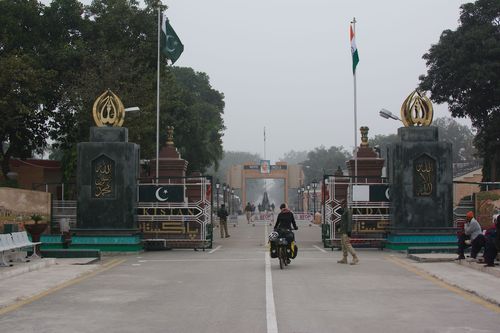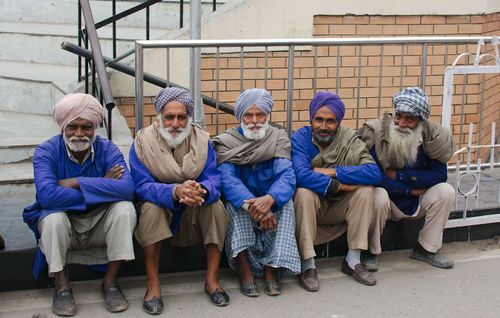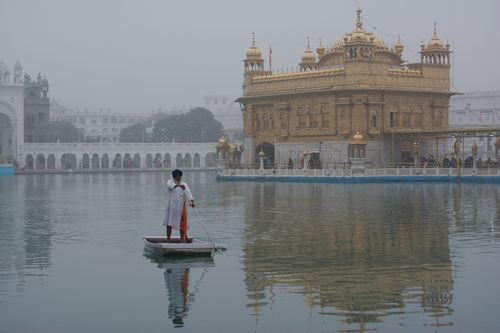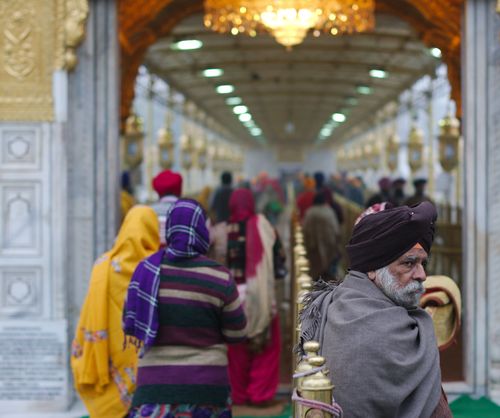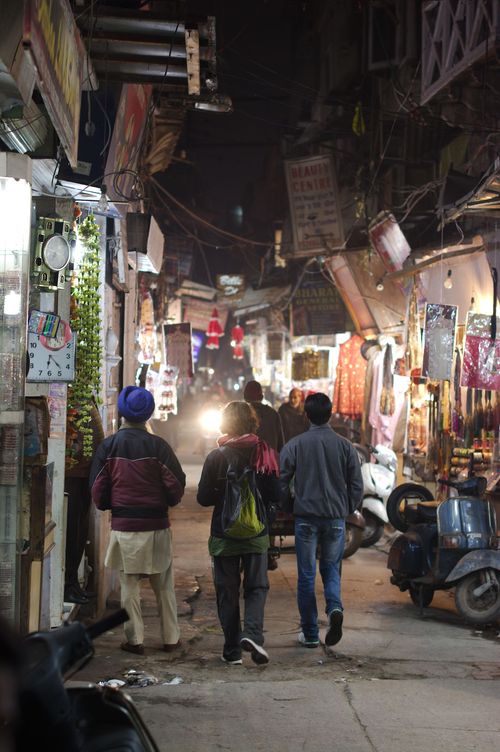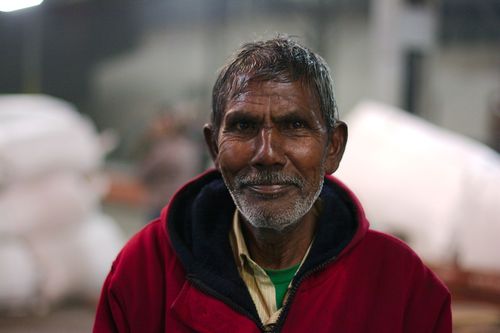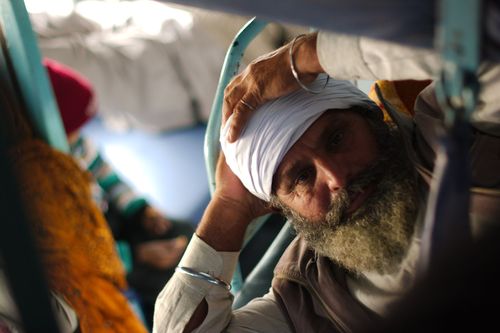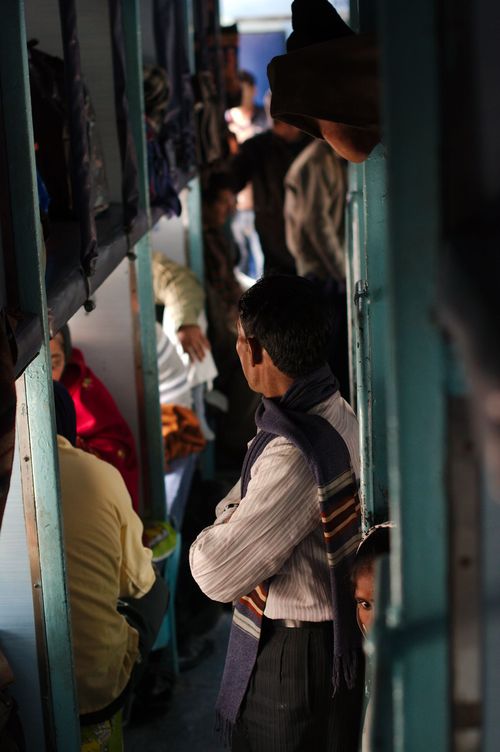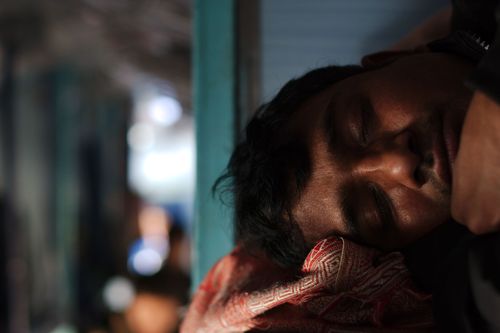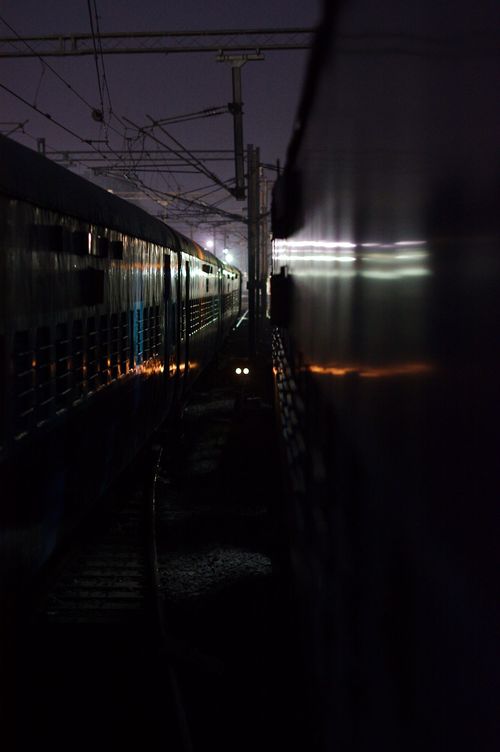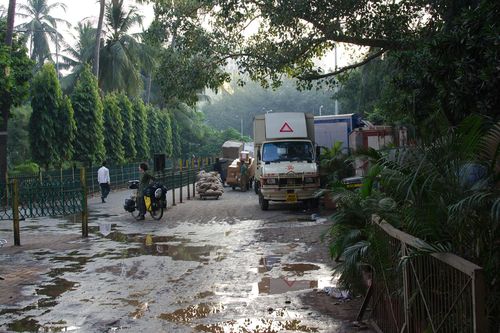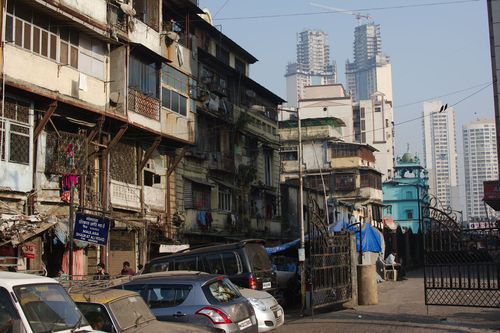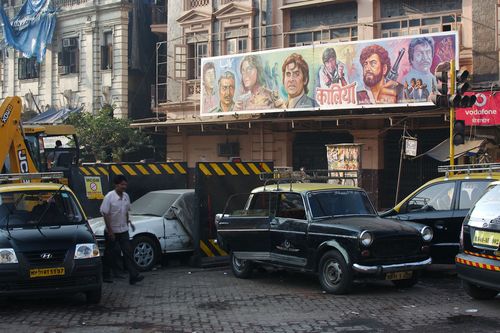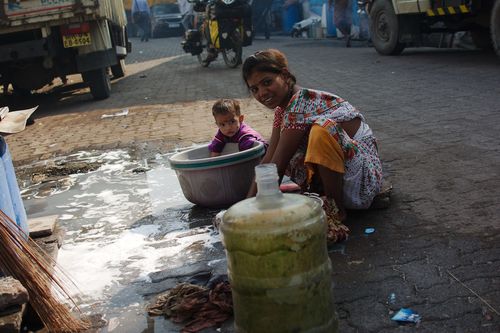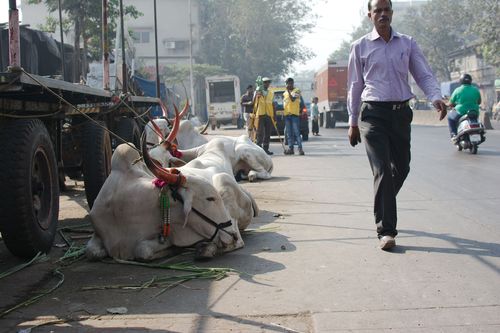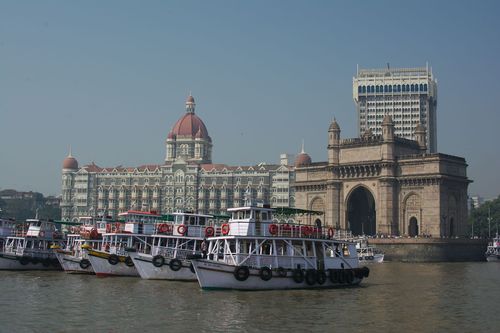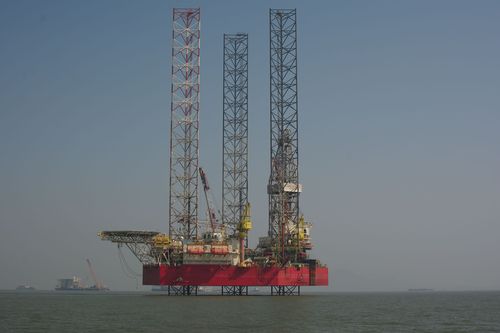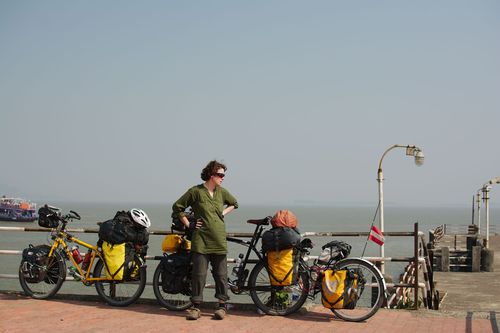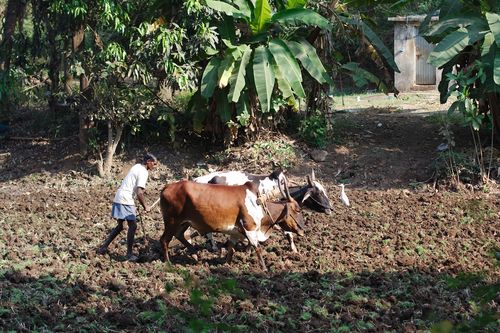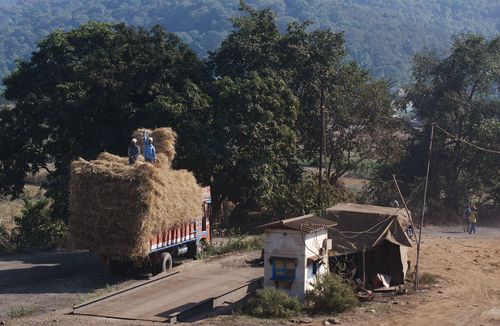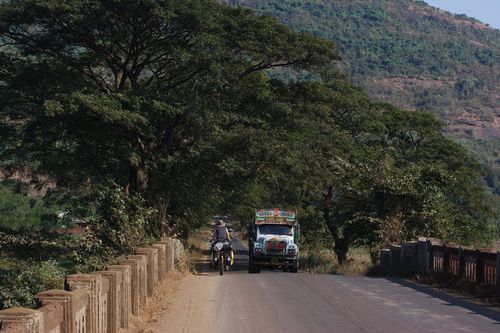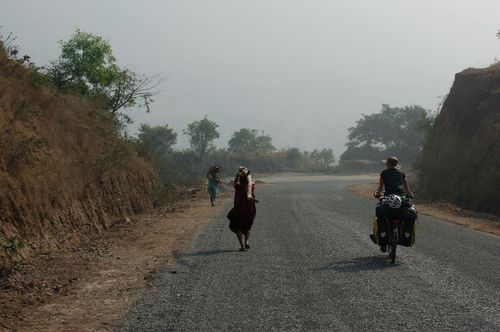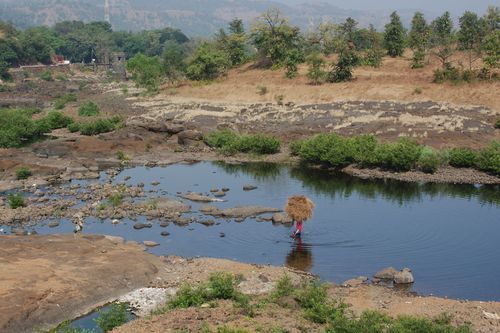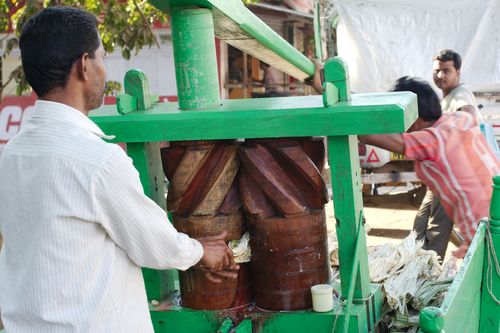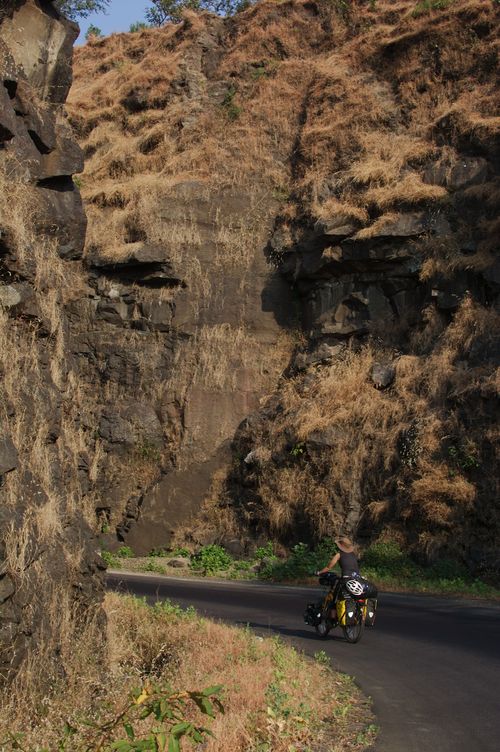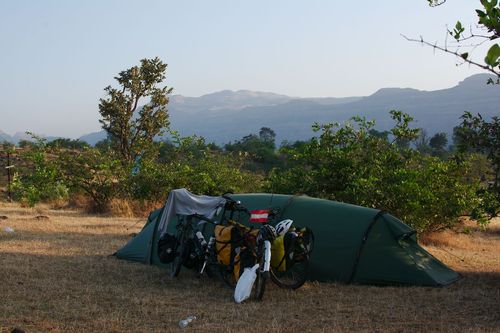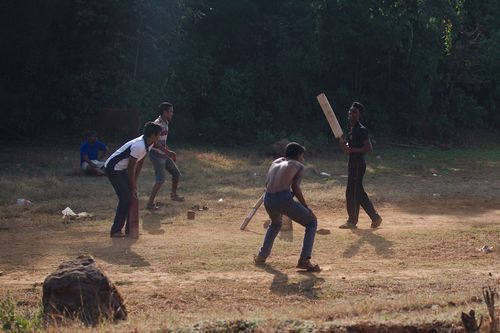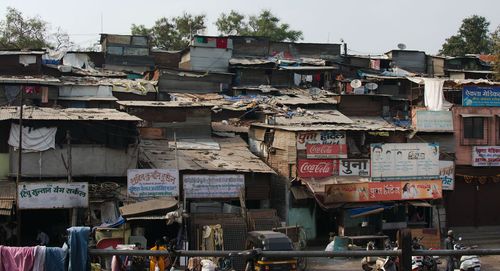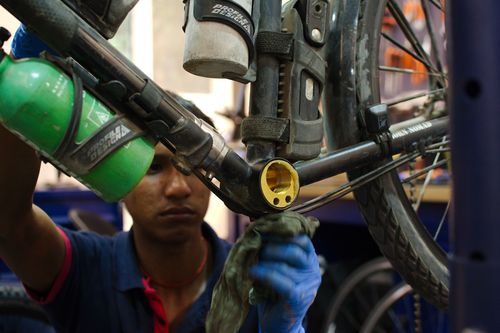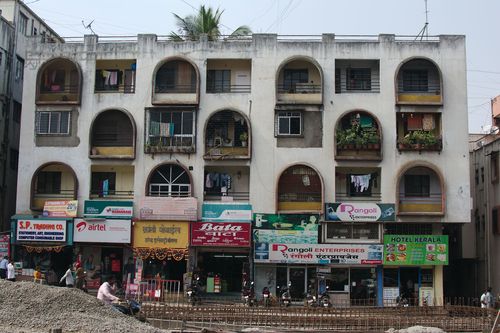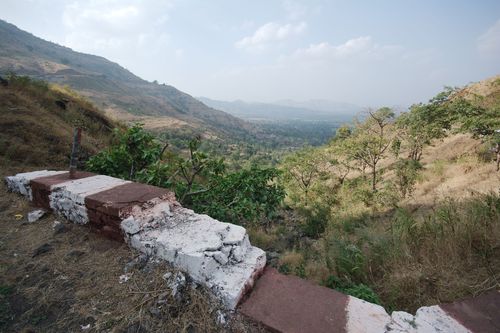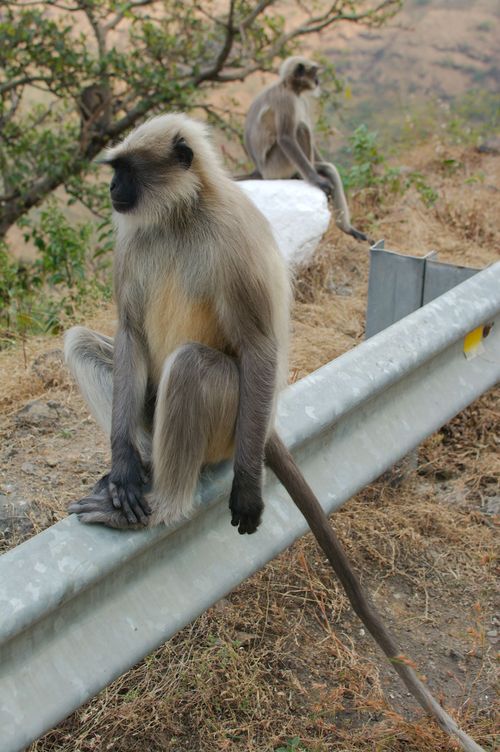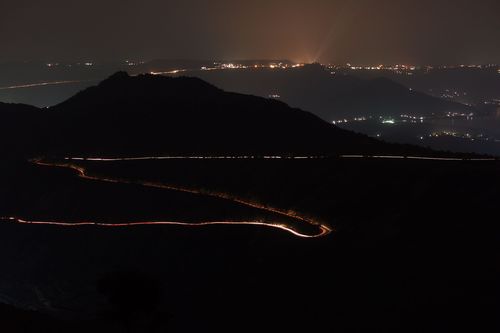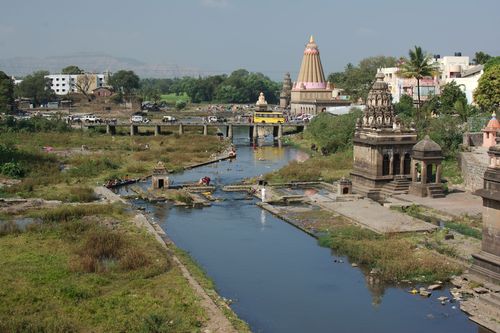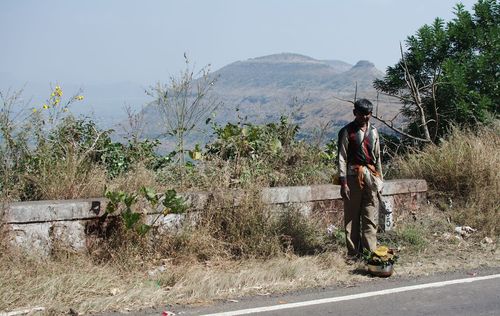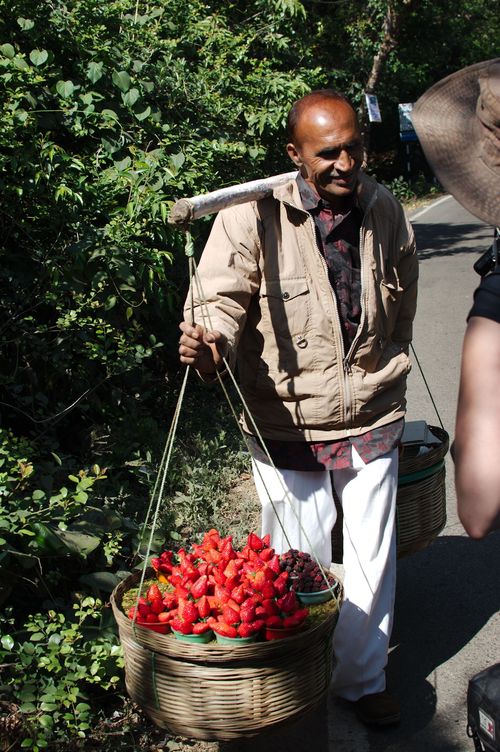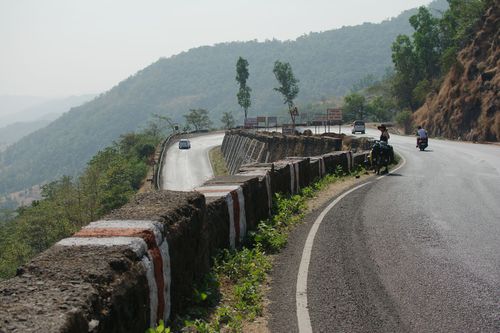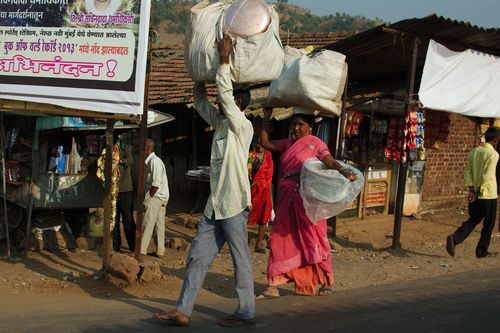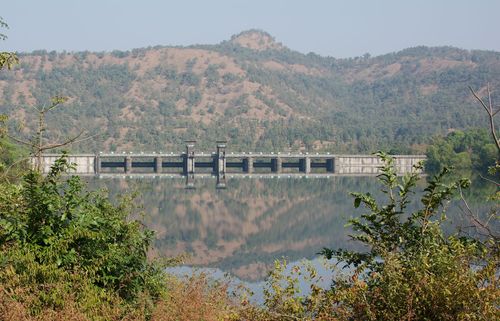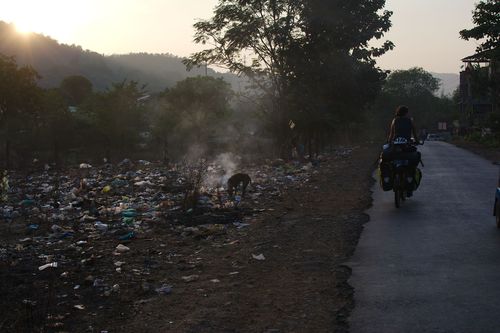Thoughts from the Steppes of Central Asia
distance: 2357.40km
duration: 91h 49min
Amritsar and from Mumbai to the northern Western Ghats
Amritsar is another shabby town along the Grand Trunk Road. Its dominating building type is the rectilinear concrete box - unsightly, narrow dark-grey blocks, 2-4 storeys high, whose very composition gives away how they where poured in a haste with the cheapest materials available. Rebars are left to protrude from the flat-roofs, so annexe and additional floors can be easily fused with the older part of the building. No person with a fondness of aesthetic appeal has ever reviewed the plans (Though i doubt there actually are "plans", the building works are done ad-hoc i guess). The owners of these buildings seem to aim for only one purpose when they commission the construction - creating a physical barrier to protect from the elements, as economical as possible.
To improve things not a bit, the street facing sides of these dwellings are literally plastered by a cacophony of signs promoting businesses large and small. These panels feature all types of font-styles, colors and sizes, sometimes with pixelated images indicating the kind of business they promote - at night they are of course accentuated by blaring neon and fluorescent lights.
So while the vertical dimension of Amritsar's streets is utterly disfigured by this incoherent, cluttered medley, the horizontal plane is dominated by heavy, incessantly hooting traffic and where there is rare dedicated space for pedestrians in the form of a sidewalk, it is disconnected and you will rarely find more than 2 meters where you don't have to step over open sewers and other holes and gaps, step down and up or avoid poles which have been planted in the middle of the path. There is no careless strolling in the cities of the east, you have to watch your step every step.
The indian subcontinent is strewn with this kind of ugly small to medium size cities (As is much of the rest of Asia, it starts in Turkey). Whenever we ride into these agglomerations after a few days in the countryside, i'm astonished and marvel how the population can put up with this - just the stress induced from the noise must shorten their lifes by years!
I always imagine how interesting it would be to put a resident of such a place into the centre of an old european city and study their reaction. They would be astonished how neat and well ordered a city can be, how quiet the traffic is in comparison. It must be fascinating to see their facial expression, the alternation of confusion and excitement. But i also imagine many Indians would feel that european cities are sterile and frigid, which they are, compared to the liveliness of asian street life.
There are of course plenty of ugly corners in european cities, especially at the fringes and near main roads. Nobody wants to live there, so the rents are low and attractive enough for poor immigrants and low income households (Which in turn makes these areas even less attractive for development and business investments).
Additionally many towns wear the stigma of the Second World War (Especially in Germany), when large parts of the historic fabric of numerous major cities where carpet bombed to rubble by the Royal Air Force. In the economic boom after the war, the cities where rebuilt in a functional, modernist and most of all cheap fashion (Not too far from the style mentioned above), the historic appearance of the streets was rarely reconstructed except for siginificant landmarks like cathedrals. This is a liability that will haunt Germany for generations.
Still you would have to look at the worst corners of an european city that are as rundown and messy as a typical street in an Indian city.
In general the majority of European urban development is well planned, organized and neat, while the majority of Indian (and Asian) urban development is not.
The same can be applied to a wide field of technological and organizational differences. Europe (And deductively North America as Europe's cultural heir) has the edge on most of them!
Since we have been cycling through Central Asia i have marveled about the various reasons why we in Europe are so advanced while other regions of the world can't seem to catch up.
The gap in wealth and advance hasn't always been this large.
My great-aunt (My grandmother's sister) lived in a tiny farmhouse in a rural region of Styria/Austria until she died of old age in the 1990s. She never had running water or electricity. She cooked with wood, washed her clothes by hand and lived from her homestead. Her life until her death was not different than a rural life today in India.
Like her, my grandmother had grown up on a farm in the 1920s to 1940s - work was done by hand or with the help of horses and cows. It was hard manual labour, there where no machines, electrification, centralized plumbing and a sewage system didn't not exist.
The film "The White Ribbon" by Michael Haneke vividly depicts this kind of rural life in Europe in the early 20th century (If you haven't seen the film, you should!).
224 years ago, India's was producing 24.5% of the world's manufactured goods (Britain 1.9%), a number which dropped to 1.7% by the end of the 1800s - the Industrial Revolution had allowed nations like Britain and the U.S. to increase their productive output manifold (And also by exploiting a cheap and powerless workforce).
But the advances of technology where not confined to the Anglo-Saxon Countries forever and during the Raj the British invested heavily in the Indian infrastructure, railways and telegraph lines where built early on and by the end of the 19th century, the fourth-largest railway network in the world had been established on the Indian Subcontinent.
Today the gap between developed and developing countries is huge compared to just 100 years ago. (There's also a huge gap between the lower and the middle class in India - and it's pretty palpable to a visitor of the country).
Cycling through the countryside the difference in wealth and technological advance is apparent by simple things in the daily life.
Washing of clothes is done by hand, usually in a river or pond near the village. Water still has to be carried in typical metal- or plastic vessels from the village well to the home - or there is a large tank on the roof which is filled by a pump from a well in the backyard (But that's probably already something only the middle class can afford).
A sewage system is something unheard of outside of major towns, wastewater treatment does not seem to exist anywhere. The power-grid is ancient and blackouts happen daily. Organized collection and ecological disposal of rubbish in treatment facilities? - of course not! Rubbish accumulates in some corner until someone burns it - or not.
In Europe all of the aforementioned things are mechanized (Washing machines!) and infrastructure works and is planned and operated to perfection.
The people in developing countries find creative solutions though and labour is cheap - we've seen human-powered recycling of cardboard and plastic bottles. Repairment/recycling of defective appliances/machines is much more common (In Austria you'll most likely have to throw away and replace it with something new if you don't have the skill to fix it yourself, repairing is mostly far too expensive).
While cycling through these regions we've also found that regulation and laws in Europe seem to work a lot better and are executed more effectively.
As an example, in Austria you are not allowed to build your house however you please - it has to fit certain standards, technically and aesthetically, if you drive like a maniac you will eventually get a ticket or loose your license, your vehicle has to meet high ecology and security standards and pedestrians have the right of way in most traffic situations.
There might be a thicket of regulations in Central Asia and India (We've experienced plenty of bureaucracy ourselves), but laws don't appear to have any effect (Traffic is nuts and i've described the rank growth of buildings in the beginning). Probably that's because you can bribe yourself out of any restrictions and norms?!
There's virtually no corruption in developed countries on the citizen level in dealing with public authorities (There's plenty of corruption on a higher-level though).
I have never in my life paid a bribe to an official in Austria to get the administration to do something - a majority of Indian's have first hand experience of paying bribes or influence peddling (But Central Asia is a lot worse in this regard, we have seen bribes changing hands in front of our eyes in Tajikistan and Kyrgyzstan. We ourselves have been able to avoid bribing anyone during this travel).
I've been hoping to understand at some point why the living situation in developing countries is still so bad, after all, the opportunities are not extremely out of favor and the initial situation was not so much different just a century ago. And one can hardly blame it on aftereffects of colonialism or economic discrimination by the developed nations alone.
One of my reasonings for the advance which i turned over and over in my head was based on the elaborateness and cross-linkedness of society in developed nations. The education is top-notch, literacy is near 100% and you have specialists for everything.
Knowledge in all fields has been built up for decades, if not centuries, there is continuous improvement in most fields and the best ways are constantly worked out. On all layers of society you have people with expertise and the application of their knowledge leads to an intertwined economy that works on a high level of efficiency.
(I make it sound like there's absolute perfection in my home country, which of course is not the case, especially in regards to future questions of societal development. Infrastructure for and administration of daily life is pretty good though where i come from).
In comparison a country like Tajikistan has a much harder time to run it's business. You are lacking key personalities in all layers of society, because the education level is still to low. The state budget is limited, as the income from taxes is minimal. The infrastructure lacks on all ends - the few roads you have are bad, the train network is weak, you have a few power plants which are hopelessly overburdened and can't provide the weakling industry, public health is close to non-existant. Your administrative organization is corrupt on all levels and you can do little about it, as your budget does not allow for higher wages.
How do you kickstart such a country?
On top of it all, the government has the short-sighted desire to reign authoritarian and continue the ways they got used to in the positions the same people held when they where still part of the Soviet Union.
This was in essence my hypothesis on the issues of the Central Asian Republics. I have no inkling in the field of development of nations but i still find my explanation convincing and i hope it's at least partly true for the case of Central Asia.
When i finally saw the chance to write my thoughts down in this essay 4 days ago, i was going to have to apply my Central Asia ideas to India, which has a much different background and environment than Central Asia.
After several approaches to formulate my thoughts in this blog and lots of research, i realized the circumstances where much different and the reasoning above can't explain the complex issues on the Indian Subcontinent. It's obvious on first sight that Pakistan and India are in a much better shape than the likes of Tajikistan and Uzbekistan. There is plenty of potential for development and there are much more resources available.
India has in the decades since it's independence been hampered by corruption, a soviet-style planned economy and the License Raj, a state enforced policy of licensing and regulating the planned economy which led to slow economical growth compared to other Asian countries like South Korea and Malaysia, whose growth rates where much higher between 1950 and 1990. The economy was only liberated in 1991 and since then India has grown much faster.
This appears to be an important aspect of why India's progress has been so slow in the 20th century. It would be an fascinating thought-experiment to see where India would stand today if there hadn't been 50 years of socialism and government owned economy.
During my research i realized however, it would take the time and length of a dissertation to properly analyze what i've been attempting to do in a single blog post.
What i can safely state though is that India, despite it's growth and fresh hope in a new administration has a long way to go. There is so much to clean up and improve, a large part of its huge population lacks education but is within reach to achieve enough wealth to take part in consumerism, which will lead to even more environmental and structural problems.
I wonder how India's cities will look like 30 years from now. Just like the purely functional post-war reconstructions in Europe, the undamped building and urban sprawl will cause plenty of headaches for future generations.
Note: I'm leading the argument for rationally established entities only - namely infrastructure, administration, legislation, etc., and i'm aware that my viewpoint and judgement is largely influenced by a "western" cultural hegemony. I can't read people's mind - i can hardly communicate with most Indians to hear their opinion! - and i concede there are different viewpoints and influences where efficiency and success are not means to an end (Religion, Spritiuality, alternative society models), so my judgement is subjective and must not offend anyone.
This essay solely tries to boil down past discussions on our experiences of the regular, daily life of cycling and living in Central Asia and the Indian Subcontinent and to attempt to answer the questions of why things are the way they are. I'm merely arguing practical, material, organizational issues where we know it could be done better and which affect the locals just as much, however placid they may take it - so i don't intend to get to philosophical or ideological about it.
